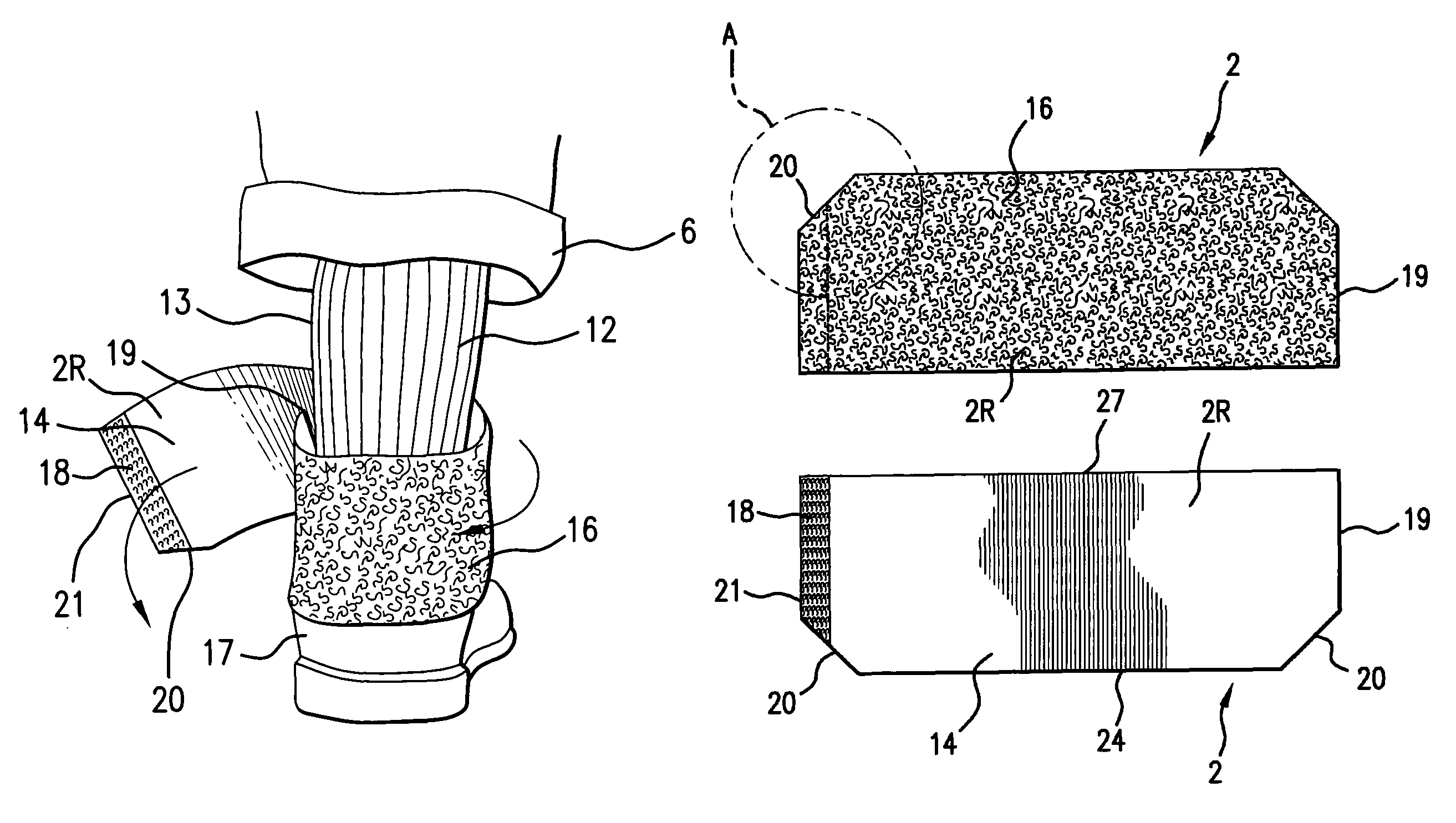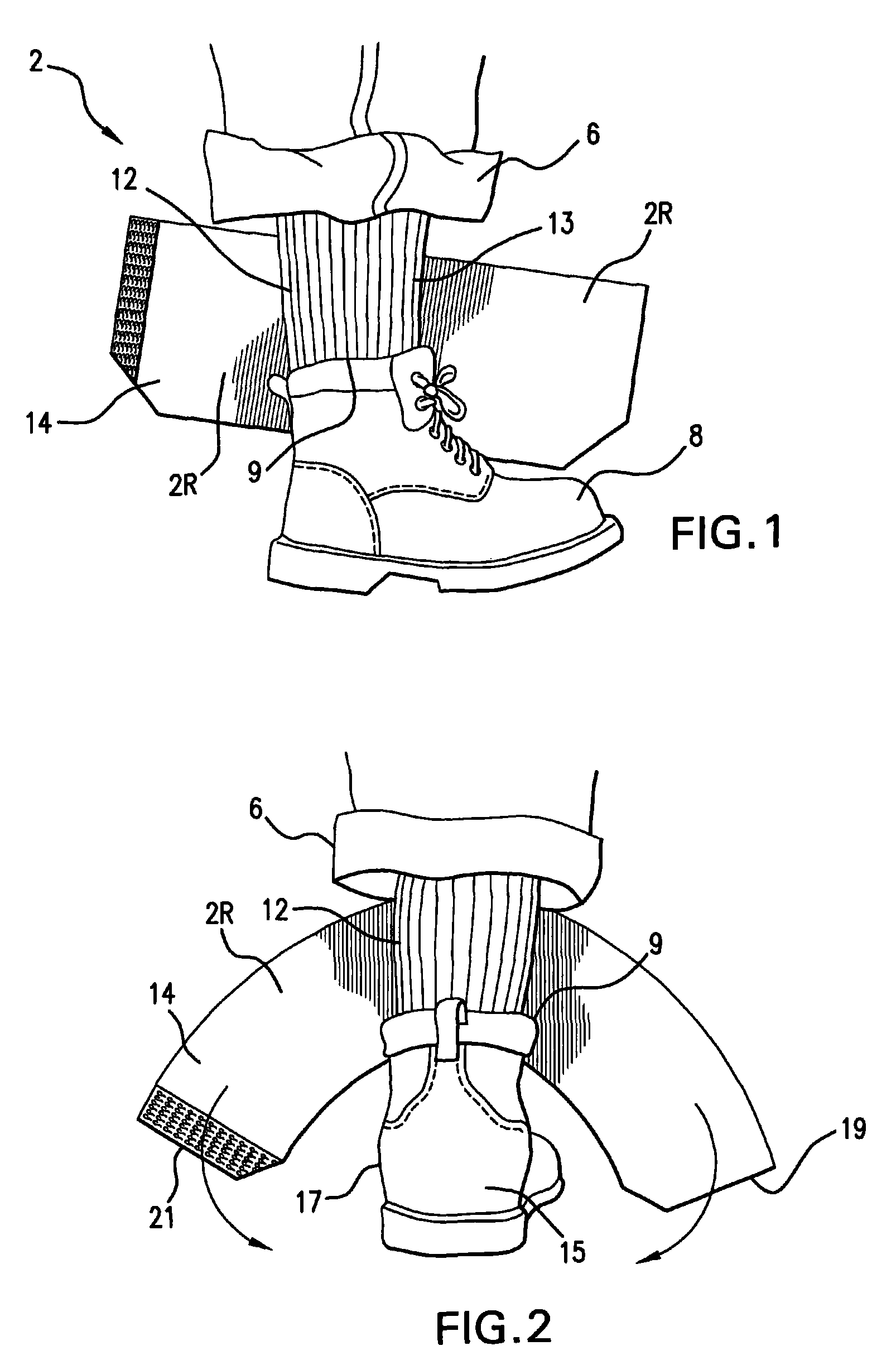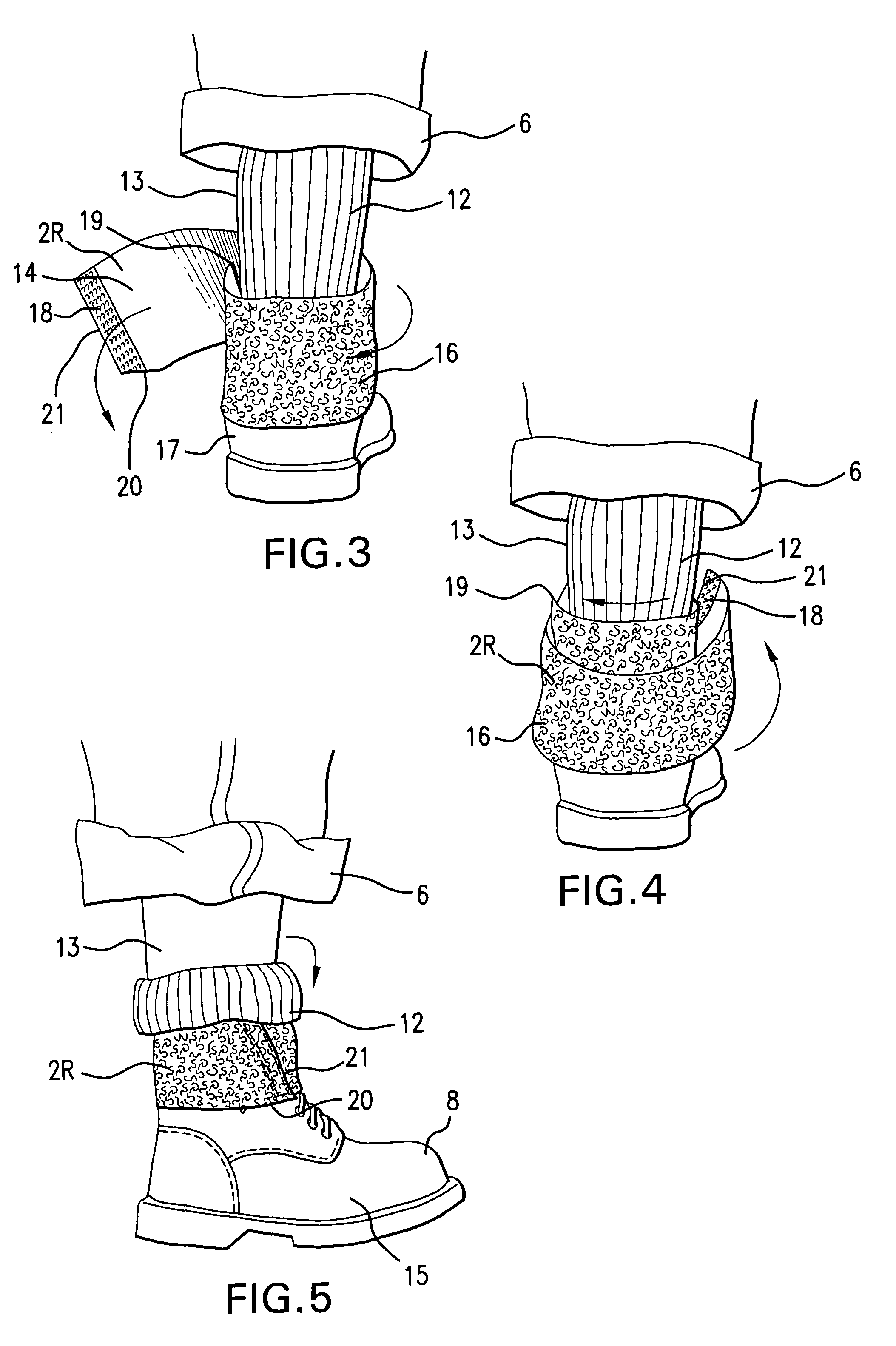Flexible footwear cover
a flexible footwear and cover technology, applied in the field of footwear, can solve the problems of limited application of most gaiter type devices, inability to adjust manually, and lack of durability of available gaiter devices
- Summary
- Abstract
- Description
- Claims
- Application Information
AI Technical Summary
Problems solved by technology
Method used
Image
Examples
Embodiment Construction
[0035]As viewed in FIG. 1, footwear is illustrated in the form of a mid-top work boot 8 (as an example of footwear to which the invention may apply) typically worn over at least one layer of sock 12 within wearer's trousers 6 depicted on wearer's leg 13. Application of the present invention usually begins by lifting or rolling-up a leg of trousers 6 as shown in FIGS. 1-5. This exposes the target area demanding snug gaiter coverage, namely upper rim 9 of work boot 8 terminating where sock 12 emerges therefrom. This is the critical zone for which an effective barrier to unwanted debris, particulates and water is to be formed.
[0036]By way of demonstration, of the inventive device and its method of use, gaiter 2R is described herein as configured for the “right” work boot 8. The importance of this protocol will become apparent in due course. The compositional makeup of the gaiter 2 also is important.
[0037]Gaiter device 2R is shown in starting position in FIG. 2, directly applied to boot...
PUM
 Login to View More
Login to View More Abstract
Description
Claims
Application Information
 Login to View More
Login to View More - R&D
- Intellectual Property
- Life Sciences
- Materials
- Tech Scout
- Unparalleled Data Quality
- Higher Quality Content
- 60% Fewer Hallucinations
Browse by: Latest US Patents, China's latest patents, Technical Efficacy Thesaurus, Application Domain, Technology Topic, Popular Technical Reports.
© 2025 PatSnap. All rights reserved.Legal|Privacy policy|Modern Slavery Act Transparency Statement|Sitemap|About US| Contact US: help@patsnap.com



